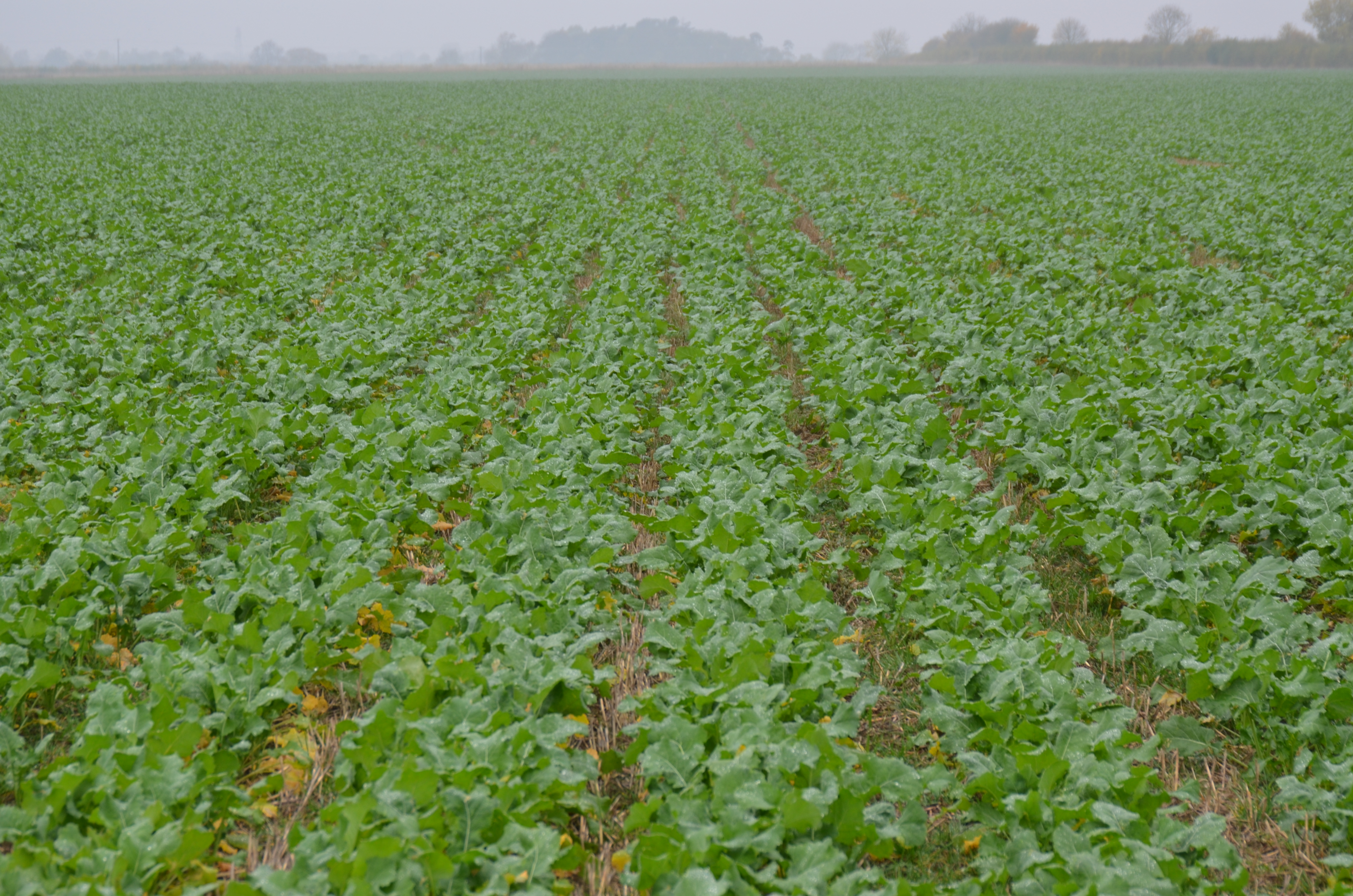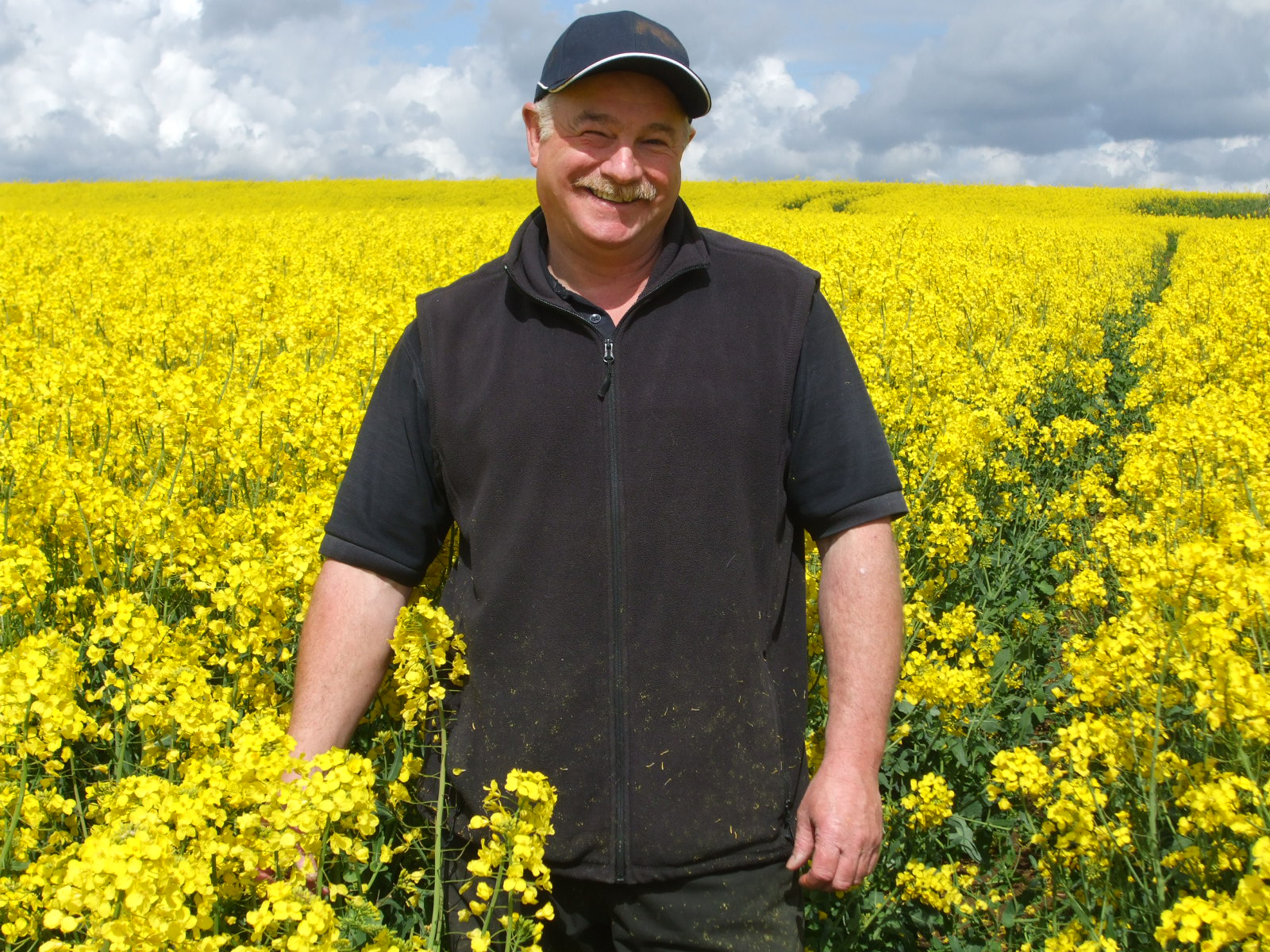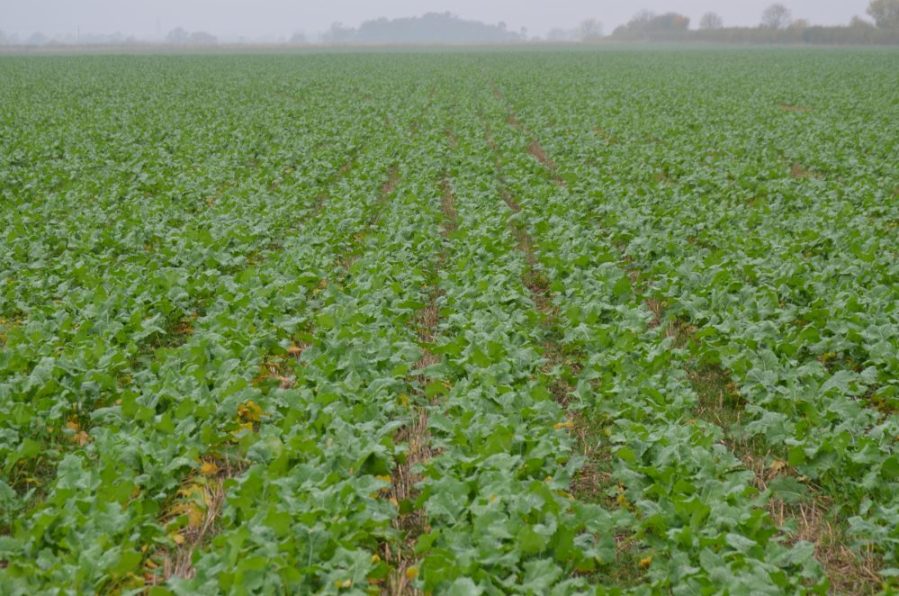
Managing the fertiliser needs of crops to optimise growth and light capture was a key take-home message for the 54 participants in the first year of ADAS’ Yield Enhancement Network (YEN) for oilseed rape. CPM talks to four of the top-ten performers in the initiative.
Reviewing the efficiency levels achieved with the YEN crop has been really valuable
By Rob Jones
One of the main objectives of the ADAS Yield Enhancement Network (YEN) is to identify the factors that limit growth and yield potential. This helps growers target their management specifically to address these on an individual farm basis.
Within the YEN framework, achieving the highest percentage of crop gross output possible (based on limiting factors such as light, nutrition or water) is as important as outright yield. Wilts grower Martin Smart has managed to achieve top scores in both of these critical benchmarks in the initiative’s first year of OSR analysis, with a total yield of 6.4 t/ha representing 70% of the crop’s total calculated potential.
The next closest yield was just 0.1 t/ha shy of this, but more than 20% down in terms of achieving its potential (58%), highlighting Martin’s results as doubly impressive.
“Reviewing the efficiency levels achieved with the YEN crop has been really valuable. It’s helped us think about how we manage all the OSR across the farm,” says Martin.

Martin Smart achieved top scores with a total yield of 6.4 t/ha representing 70% of the crop’s total calculated potential.
“We do like to push for high yields wherever possible, but the efficiency is really more important to show that we’re doing the best we can in our own individual circumstances.”
Growing around 240ha of OSR a year as part of 1200ha of arable cropping, Martin’s YEN crop of SY Harnas was grown alongside his extensive on-farm variety trials site on Cotswold brash.
“We want to develop strong healthy plants with deep roots that can scavenge whatever water and nutrients are available, along with an open canopy that can utilise all available light to turn that into yield.”
Whilst many factors contribute to this, managing fertiliser requirement carefully is a critical element of its achievement, he says.
“If the crop has a small canopy we’ll maybe focus on a higher proportion of early N, but we’re aware that crops with a deep root and strong potential will grow away fast as soon as increased day length triggers growth.
“It’s crucial plants have sufficient N to keep growing and this is why in-depth soil N testing to give full knowledge of what nutrients are available is so essential.”
He achieves this by starting off with CF Fertilisers’ N-Min analysis in early spring, then he fine-tunes applications via the company’s N-Calc system and takes regular green leaf area assessments throughout the growing season.
With target yields of around 5.0t/ha, the farm standard N rates are typically in the region of 220kgN/ha applied as Heartland Sulphur (24N 8P 8K 8SO3) in three splits, but for the YEN crop the N was increased up to 300kgN/ha.
“We opted to push the N input on the YEN crop, and the results in yield and seed quality certainly indicate that there’s some potential to economically use more in other areas in the future.
“Despite using such a high N input, YEN estimated that our crop captured 64% of the potential solar radiation – close to the biophysical annual light interception limit of 70% – compared with an average for the group of around 50%.”
Using nitrogen carefully and controlling canopy growth are also critical elements of OSR production for fourth-placed Jon Birchall, who grows around 80ha of the crop on the 520ha Sundorne Estate, near Shrewsbury in Shrops.
Jon produced the same 5.7t/ha yield as the third place, but with a slightly lower percentage of gross yield potential achieved, he cites maximising light capture as a key priority for him.
“High yields often correlate with low biomass early in the season and a warm dry spring, like we had in 2017, can help but you obviously can’t rely on this happening every year.
“You have to make a reasonable assessment of the size of your crop and be prepared to play tunes with your nitrogen applications, so you don’t end up with an overly large canopy that restricts the light getting in.”
In the past Jon has used an ISARIA crop sensor to help assess canopy size but he’s now looking at drone technology and satellite imagery as part of a new AGRI initiative, launched by Harper Adams and Aston Universities.
“All the elements that we want are there but one of the main things now is to get everything talking to everything else, so it can actually deliver tangible results on-farm.”
As with Martin Smart, N-Min is used in early spring to evaluate the nitrogen available to the crop from the soil and this is fed into CF N-Calc to establish optimum nitrogen rates.
“Standard soil testing only looks at soil mineral nitrogen (SMN) and disregards the reserves that will become available to the plant through the further mineralisation that will occur from the time of the test to harvest.
“Without knowing this it’s all too easy to overestimate N need, so when you feed in your GAI analysis you can end up putting too much fertiliser on and get caught up in a vicious cycle of large canopies and PGRs to try and control them.”
Using nitrogen more efficiently also adds to margins and saves on fertiliser costs in OSR, he says.
“In farm trials, we’ve seen yield increases of 0.5t/ha (worth an extra £130/ha), when compared to recommendations based on the RB209 fertiliser manual and, in some cases, we’ve saved 40kg/ha in fertiliser.”
YEN estimated Jon’s crop intercepted 55% of available light, 15% short of the 70% upper limit for light capture, whilst water capture was 63% of that available.
“It’s easy to see where the yield limitations come from but it’s great to come fourth overall,” he says. “Considering we put a whole field forward into the YEN initiative, it’s good to know our normal farm practice has done so well but equally it’s sobering to realise we only saw 44% of the potential yield achieved.
“There’s so much more to get from OSR and understanding the limiting factors is key. I’m convinced that new technology has a huge role to play in the future in helping us identify these and build better management around them.”
Timing of applications is also key believes Lincs grower Chris Richardson, whose 5.7t/ha of variety V316 OL put him in sixth place overall in the YEN initiative.
“Our approach to growing OSR means that we already practice much of the key management recommendations that have come out of YEN so far.
“When it comes to applying fertiliser, for example, we’ve found the little and often approach works best for us, but having access to all the information about your soils is essential.”
Drilling of Chris’ YEN crop took place in the first week of Sept, with the addition of 100kg/ha of a 25:10:0 starter fertiliser contributing to strong establishment despite the later than hoped for drilling date.
“The crop branched exceedingly well, but never got above about 90cm tall, so we decided to do all we could to encourage it.”
Chris normally splits the application of fertiliser based on his N-Min results, with 150kg/ha of product going on in mid-Feb and a further 150kg/ha applied two to three weeks later.
But, because the YEN crop was drilled late and subsequently developed more slowly than those drilled in Aug, it was decided it should go on as a single application.
A greater-than-normal amount was applied on 13 Feb; with 225kg/ha of DoubleTop (27N + 30SO3) giving 61kgN/ha, followed by 300kg/ha of Nitram (34.5%N) on 22 Mar providing another 104kgN/ha and a further 250kg/ha on 12 Apr adding a final 86kgN/ha.
“Going into the spring it was apparent that the crop in the OSR YEN area had established well but was backward compared with others, which probably reflected late drilling, although V316 is an inherently short variety.
“That said, we were pleased to achieve the result we did, although ultimately we’re more interested in taking part in YEN because of the information-sharing element of it rather than the yield competition bit.”
Sulphur is also essential for getting the most out of OSR, says Charlie Steer, arable farm manager with Cheshire’s large-scale mixed farming operation Grosvenor Farms.
Their yield of 5.5t/ha and 42% of gross output potential achieved put them in ninth spot overall in the YEN initiative.
“I think that’s a very good result considering we’re a mixed farm and not in the best location for arable production,” he points out.
“Nonetheless, I’m a big fan of OSR – it’s a good break crop, gives us the chance to use lots of FYM from the dairy in the autumn, is early to harvest and helps us spread the workload better.”
This year, some 252ha of OSR are being grown by Grosvenor Farms – down from 390ha the previous year due to the farm’s decision to open up rotations.
“The OSR used to go in after winter wheat, but we’re now drilling it after winter barley so we can get it in a bit earlier. With so much straw to bale for the dairy, we used to find it getting later and later to drill after wheat, so this should work better for us.”
Again, N-Min is used strategically across the OSR to establish nitrogen requirement and was very much part of the management for the YEN crop, he says.
“We tend to use a first application of DoubleTop to deliver 70kg SO3/ha with the corresponding amount of nitrogen from that, and then top this up as needs be with straight Nitram as a second dressing.
“Depending on what N-Min says, that second dressing can be anywhere between 40-170kgN/ha.
“If we’ve been able to get a good amount of FYM on the previous autumn, and we have a very large green area in the early spring, we may just apply a single application of DoubleTop to provide 90kg SO3/ha plus the associated N and the crop won’t require a second application at all.”
Although happy with the reserves of N identified by N-Min in the YEN crop and the corresponding rate recommendations from N-Calc, timings might come under more scrutiny in the future, Charlie says.
“Although the GAI was 2.8 when we evaluated it, the YEN team suggested that our crops could have fared better with greater light interception.
“So it could be we have to look at going in a bit earlier on the thinner crops to bulk the canopy up a bit. It’s always tricky though, as too much biomass creates shading and too many subsequent flowers reflect too much radiation back.”




